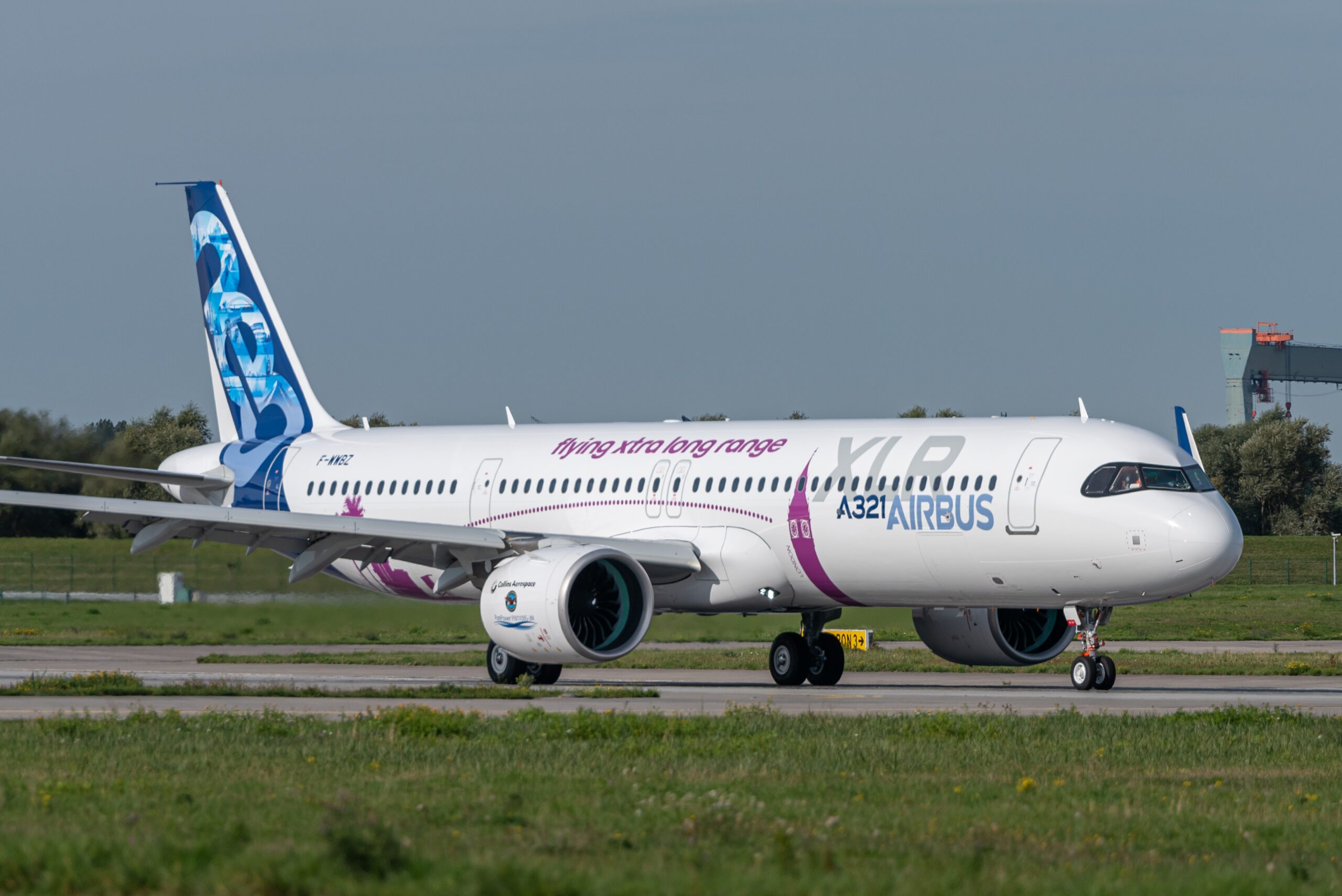
A321XLR second test aircraft first flight scaled
The Airbus A321XLR is expected to enter service in the second quarter of 2024. This is slightly later than what the airframer said in May, when it announced a delay of the program to “early 2024”. Airbus mentioned the latest date in its Q3 results, which were solid backed by higher aircraft deliveries and sales, it said on October 28. Entry into service Airbus A321XLR now expected Q2 2024.
In May, Airbus said that the XLR’s entry into service had slipped from late 2023 to early 2024 in order to meet certain requirements of the regulatory agencies. These have to do with the certification of the XLR’s unique feature, the 12.900 liter Rear Center Tank (RCT) just aft of the wing. Airbus has suggested some modifications to make the design safer after some voiced concerns that there was a safety issue with the tank positioned immediately behind the main landing gear and directly under the passenger cabin.
Since the first flight of the first A321XLR with CFM LEAP engines on June 15, all three test aircraft have now entered the test program. The second aircraft with Pratt & Whitney Geared Turbofans (GTF) first flew on September 23 (main picture) and the third one, which is fitted with CFMs again a fully-furnished cabin, joined the program on October 20.
CEO Guillaume Faury said that the new EIS-date for the XLR is the result of getting a better understanding of the program’s schedule and certification requirements. He stressed that the discussion on the RCT “is not about modification. It is about defining the requirements of this new RCT and the XLR as a whole, as the XLR is not just about the RCT, it is a whole new plane in many dimensions. We are able now to have a very precise schedule, having all the parameters stabilized in the three prototypes in flight going to certification and entry into service. That’s why we give Q2 2024 as an indication for entry into service.”
Nine-month profit of 2.6 billion
Exactly fifty years to the day since the first A300-B2 made its first flight, Airbus reported a consolidated €2.568 billion net profit for January to September, which compares to €2.635 billion. Reported EBIT was €3.552 billion (2021: €3.437 billion), and an Adjusted EBIT of €3.481 billion (€3.369 billion). Revenues totaled €38.119 billion compared to €35.155 billion. Free cash flow before mergers and acquisitions and customer financing improved to €2.899 billion versus €2.260 billion. Airbus ended September with €7.972 billion in liquidity, up from €7.740 billion.
Consolidated results for Q3 are: a net profit of €667 million (2021: €404 million), Reported EBIT €973 million (€710 million), Adjusted EBIT €836 million (€666 million), and revenues of €13.309 billion (€10.518 billion).
Looking at Commercial Aircraft, the business unit produced a nine-month Reported EBIT of €3.241 billion (2021: €2.289 billion), and Adjusted EBIT of €2.875 billion (€2.739 billion), and revenues of €26.654 billion (€24.618 billion). For Q3, Reported EBIT was €763 million (€502 million), Adjusted EBIT €599 million (€448 million), and revenues of €9.121 billion (€6.805 billion).
Deliveries to be backloaded again
Airbus took 647 net orders between January and September, up from 133 aircraft in the same period last year. It delivered 437 aircraft year to date, which compares to 424 in the same period of 2021. Deliveries included 34 A220s, 340 A320neo family aircraft, 21 A330s, and 42 A350s. Airbus maintains its guidance for 700 deliveries for the full year, which means that – like previous years -, 2022 will be backloaded again with many deliveries scheduled in the final weeks of the year.
Supply chain issues continue to impact production “all around the place. There is a lot of complexity, with a lot of parts arriving late and it drives a lot of unspent work in the production flow. The production efficiency is low, predictability is lower than it should be and there is more work to be done on each plane”, said Faury. He expects the situation to continue at least until the middle of next year.
The number of ‘gliders’ or aircraft waiting for engines to be delivered is at single-digit levels and back under control as engine makers CFM and Pratt & Whitney are delivering at a sustainable level again. “We have a stable flow of engines coming in and the flow is consistent with the latest updates of their delivery schedules. It is behind schedule compared to what we had agreed at the end of last year and the beginning of this year, but it has stabilized. Compared to the beginning of the year, it has probably stopped degrading. I hope we are at the low point and we see with a number of suppliers and not just engines that they are stabilizing the ability to deliver.”
The previously announced production rates remain unchanged. The A320neo family will be around fifty by the end of this year, going to 65 in early 2024 and 75 in 2025. All assembly lines will be able to accommodate the production of the A321neo family, with a second Final Assembly Line (FAL) in Toulouse being prepared for the larger version. The A220 is at six aircraft per month, the A330 will go to three per month later this year, and the A350 to six per month in early 2023. This could go up to higher rates as demand for widebodies is recovering, but this is being discussed with suppliers.
Views: 15



